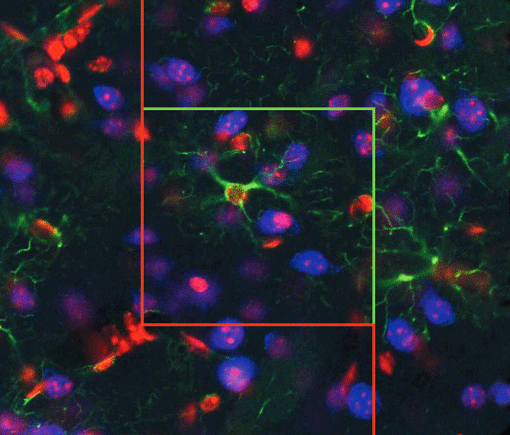
Stereology: Avoiding Bias Using the Optical Fractionator
Stereology allows us to estimate the amount and size of biological features that are impossible or prohibitive to measure exhaustively. If the stereological probe is designed well, and we can manage to
follow all the rules, bias due to sampling design and estimation methods will be eliminated, resulting in a more accurate estimate. For instance, when using the Optical Fractionator to estimate the number of cells in a particular region, we follow rules to make sure a given cell cannot be counted more than once. The reminders listed here will help you avoid some of the common sources of bias.
Section the Entire Region of Interest
Sampling should be systematic and random. Use the cryostat, vibratome, or microtome to take sections of the whole anatomical area; not just at a supposedly representative section or sections. Pick a section interval and randomly choose the starting section for each animal. This gives every section throughout
the entire region an equal chance of being picked for sampling.
Choose a “Point” on the Cell
If you apply the counting rules to the whole cell, large cells, and those oriented perpendicular to the plane of sectioning, will have a greater chance of being counted than smaller cells or cells with parallel orientation. To avoid size and orientation bias, do not use the whole volume of the cell as the basis of your counting decisions. Instead, dwindle the volume down to a point as much as possible. The finer the resolution in the optical plane (focus), the easier this is to do. The ‘point’ you choose must be uniquely identifiable on the particle. Some suggestions include the cell ‘top’ (i.e., the first part of the cell to come into focus) or the cell nucleolus, if there is one and only one per cell.
Use Thicker Sections
An Optical Fractionator probe typically requires approximately ten to fifteen optical planes through the z-axis of the disector. This is easier to achieve with better z-resolution and with thicker sections. Having many optical planes, instead of just a few, allows for a finer visual discrimination. The advantage is being able to distinguish more easily where the “point” on the cell is in order to determine if it falls inside the disector and should be counted. With fewer optical planes, observer bias can result and begin to reach significant levels.
Eliminating bias is desirable, but we must also do the proper amount of sampling, so the estimate will be precise. This makes it more likely that any given estimate will be closer to the mean of all possible estimates. In other words, eliminating bias will not be enough to efficiently get a good estimate. You must also do enough work for your required level of precision, but not so much that you are wasting time and valuable resources.
Learn more about using the Optical Fractionator at mbfbioscience.com.



